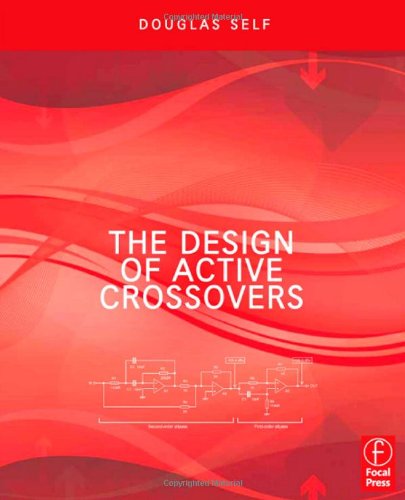The Design of Active Crossovers download
Par martin christy le jeudi, janvier 26 2017, 06:32 - Lien permanent
The Design of Active Crossovers by Douglas Self


The Design of Active Crossovers Douglas Self ebook
Page: 605
Format: pdf
ISBN: 0240817389, 9780240817385
Publisher: Focal Press
Electronic active crossovers can have extra compensating circuitry. I will design an audiophile quality loudspeaker that will sound great with or without the DEQX, and can be used with one amplifier, bi-amplified, or tri-amplified, with passive or active crossovers. The Design of Active Crossovers by Douglas Self F..al Pr | 2011-07-08 | ISBN: 0240817389 | 608 pages | PDF | 10.92 MB The Design of Active Crossovers is a unique guide to the design of h. KRK VXT4 Studio Monitor Speaker Bundle w/ Two 10-Ft XLR Cables & Polishing. If one were to design and build their own active crossover, you save a lot of cash on the passive crossover parts. Crossover Points & Order At the crossover point, power to each loudspeaker is reduced -3 dB (1/2) so total sound energy is 1. Lets start by describing an active crossover. As a B-segment global crossover, Peugeot Urban Crossover variant is mainly targeted to the customers who have high mobility to fill their active lifestyle. In some passive crossovers this is adjusted for by reversing the polarity of adjacent loudspeakers. His rigorous, skeptical, and thoroughly practical approach to design has been applied to the small signal area as well, and some of the results can be found in his recent book, The Design of Active Crossovers. Then you need to design active electronic custom crossovers, or use achieve the same use units such as Mini DSP. Its internal active crossover and custom-designed dual amplifiers ensure an extremely consistent performance under a variety of different studio conditions and program material. Then you need an amp for every frequency band the speaker requires. The EbenLee Audio Mini Cube and MC2 SE speakers were designed to be used this way. Almost any modern receiver allows us to use fully active crossover circuits if the speakers are designed to use them properly. At the crossover point More recent design trends are for power to be decreased to -6 dB (1/4) to each loudspeaker at the crossover point, and the slope rate can be selected. In short, any cost and design complications in systems using active crossovers are offset by the following gains: "The end result? One of the more unique aspects of the ULP is the utilisation of an active crossover rather than the traditional passive crossover found in 95% of commercial designs. And if you have active speakers (mains and subs) with digital inputs are your considerations still valid having the additional benefit of active crossover designs in those active speakers?